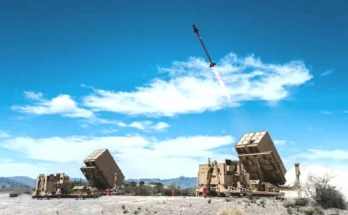U.S. Army officials have identified around $31 billion worth of funding adjustments over multiple years in order to support the service’s top six modernization priorities. Earlier this year, the service said it had identified $25 billion worth of funding adjustments, meaning the potential shift has increased in scope by some 25 percent in recent weeks. Some of the increase is due to efforts beyond investing in new equipment, such as plans to staff operational units at 105 percent of their authorized end strength in order to offset potential personnel losses from things like sickness or administrative issues.
To provide a sense of scale, the Army received $26.9 billion for procurement and $11.4 billion for research, development, test and evaluation in fiscal year 2019.
The funding was identified by a panel of senior army leaders, comprising Army Secretary Mark Esper, Under Secretary Ryan McCarthy, Chief of Staff Gen. Mark Milley, and Vice Chief of Staff Gen. James McConville. The team essentially went through a list of the Army’s entire acquisition portfolio to identify ways to cut the cost of existing programs, while tagging others to be scaled back or terminated.
Of the $31 billion, around $8 billion will come from trimming the costs of existing programs. These projects shouldn’t be strongly impacted, as cost reductions will come from things like contract savings, or production efficiencies. The remaining $22 billion, however, will come from program reductions or terminations. The service has not identified what programs will take a hit. The money will be shifted towards the service’s top modernization priorities, which are long-range precision fires, future vertical lift, next-generation combat vehicles, air and missile defense, networks, and soldier lethality.
The Army conceded that the bulk of the funding changes are backloaded, meaning they will come towards the end of the latest five-year spending plan. It remains to be seen what the impact will be on the FY20 budget request, due out next month. One problem with backloading budget plans is that a lot can change between now and then, including requirements, available funding, and leadership in charge of major planning decisions.
However, the Army wants to undertake similar scrubs of its modernization efforts in the future, which could allow the service to maintain momentum and ensure that its top modernization priorities receive adequate investment.
Shaun's deep-rooted interest in military equipment continues in his role as a senior defense analyst with a focus on the United States. He played an integral role in the development of Forecast International's U.S. Defense Budget Forecast, an interactive online product that tracks Pentagon acquisition programs throughout the congressional budget process. As editor of International Military Markets – North America, Shaun has cultivated a deep understanding of the vast defense markets in the United States and Canada. He is a regular contributor to Forecast International's Defense & Security Monitor blog and has co-authored white papers on global defense spending and various military programs.




